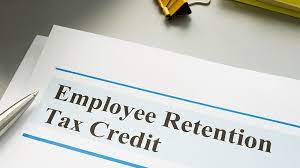
In the wake of the COVID-19 pandemic, numerous employers, including small child care businesses, faced unprecedented challenges. To aid individuals, families, employers, and communities, Congress introduced several bills. Among the relief measures available to businesses is the Employee Retention Tax Credit, an incentive designed to encourage employee retention by providing a tax credit against employer payroll taxes. Given the economic hardships experienced by child care centers, many of them may qualify for this tax credit. Additionally, certain family child care homes with employees may also be eligible. This article will outline the Employee Retention Tax Credit for both 2020 and 2021, as both tax years are affected by this program.
Eligibility Criteria for the Employee Retention Tax Credit
To be eligible for the Employee Retention Tax Credit, employers (both for-profit and non-profit) must meet the following requirements:
- Their business was fully or partially suspended during any calendar quarter in 2020 due to COVID-19. OR
- Their business experienced a significant decline in gross receipts.
For 2020, a significant decline in gross receipts means that an employer’s gross receipts were less than 50% of the gross receipts for the same calendar quarter in 2019. Once quarterly gross receipts exceed 80% of the gross receipts for the corresponding quarter in 2019, employers are no longer eligible for the tax credit.
For 2021, the eligibility criteria were expanded under the December 2020 law. Employers now only need to demonstrate that their gross receipts are less than 80% of the gross receipts for the same quarter in 2019 (i.e., a 20% reduction in gross receipts compared to a 50% reduction). Moreover, employers have the option to compare the gross receipts of the preceding quarter with the same quarter in 2019, instead of comparing the current quarter.
Value of the Employee Retention Tax Credit
For small employers with 100 or fewer full-time employees in 2020 (different rules apply to employers with more than 100 employees), the tax credit is worth a maximum of $5,000 per employee for the year. This amount corresponds to 50% of $10,000 in wages per year. The wages considered for the credit are those paid after March 12, 2020, and before January 1, 2021.
Under the December 2020 law, as modified by the American Rescue Plan, the tax credit for 2021 increased for small employers with 500 or fewer full-time employees. The maximum credit per employee is now $28,000. The credit amount was adjusted to 70% of wages, up to $10,000 per quarter (i.e., $7,000 per quarter). The December 2020 law extended the credit through June 30, 2021, while the American Rescue Plan extended it through December 31, 2021.
It’s important to note that “wages” include both employee wages and the cost of employer-provided health care coverage. Wages paid for sick or family leave, which are reimbursed through payroll tax credits under the Families First Coronavirus Response Act, should not be included to avoid duplication.
Claiming the Employee Retention Tax Credit
While individuals typically pay taxes annually, most employers pay taxes quarterly. Employers that pay wages subject to federal income tax withholding or social security and Medicare taxes file IRS Form 941 quarterly. For instance, the first quarter of the calendar year covers January through March 31, and IRS Form 941 is due by April 30. The Employee Retention Tax Credit is claimed against the employer’s share of payroll taxes indicated on Form 941. Essentially, employers retain the corresponding amount that would have been paid in payroll taxes each quarter.
If the tax credit amount in one quarter exceeds the payroll taxes, employers can request an advance of the Employee Retention Tax Credit by submitting IRS Form 7200. This process allows them to receive a portion of the upcoming quarter’s payroll taxes in advance. If the actual credit amount for the next quarter is lower than the advance payment received, employers will need to repay the excess amount.
Other Key Updates in the FY2021 Consolidated Appropriations and COVID Relief Act (P.L. 116-260)
The U.S. Small Business Administration Paycheck Protection Program (PPP), established under the CARES Act in March 2020, presented employers with a choice between the Employee Retention Tax Credit and receiving a PPP forgivable loan. However, the December 2020 law introduced a provision allowing businesses that received a PPP loan in 2020 to also claim the Employee Retention Tax Credit.
Employers with a PPP loan cannot include wages paid through PPP as part of their wage calculation for the Employee Retention Tax Credit to prevent double dipping. Since PPP loans were intended to support payroll for a specific period, it’s likely that some wages paid during the year were not covered by the PPP loan. Further details can be found in IRS Guidance 2021-20. Employers looking to claim the Employee Retention Tax Credit for 2020 will generally need to amend their IRS Form 941 by filing an IRS Form 941-X for a refund.
By understanding and leveraging the benefits of the Employee Retention Tax Credit, child care businesses can access vital financial support to navigate the challenges posed by the COVID-19 pandemic. Ensure compliance with the eligibility requirements, calculate the tax credit accurately, and follow the necessary procedures to claim the credit efficiently. Consult with a tax professional or refer to official IRS guidance for personalized advice and guidance tailored to your specific situation.





